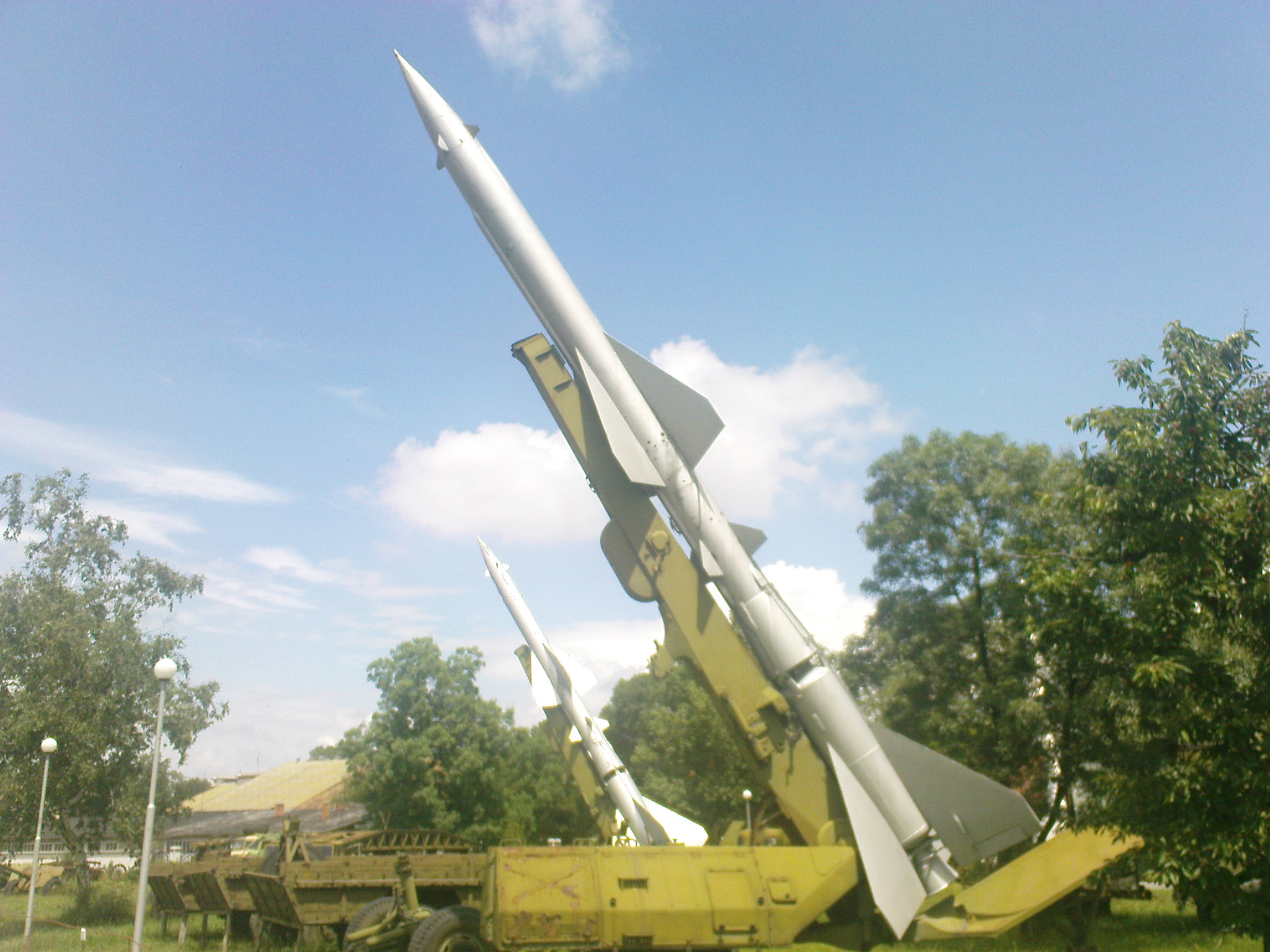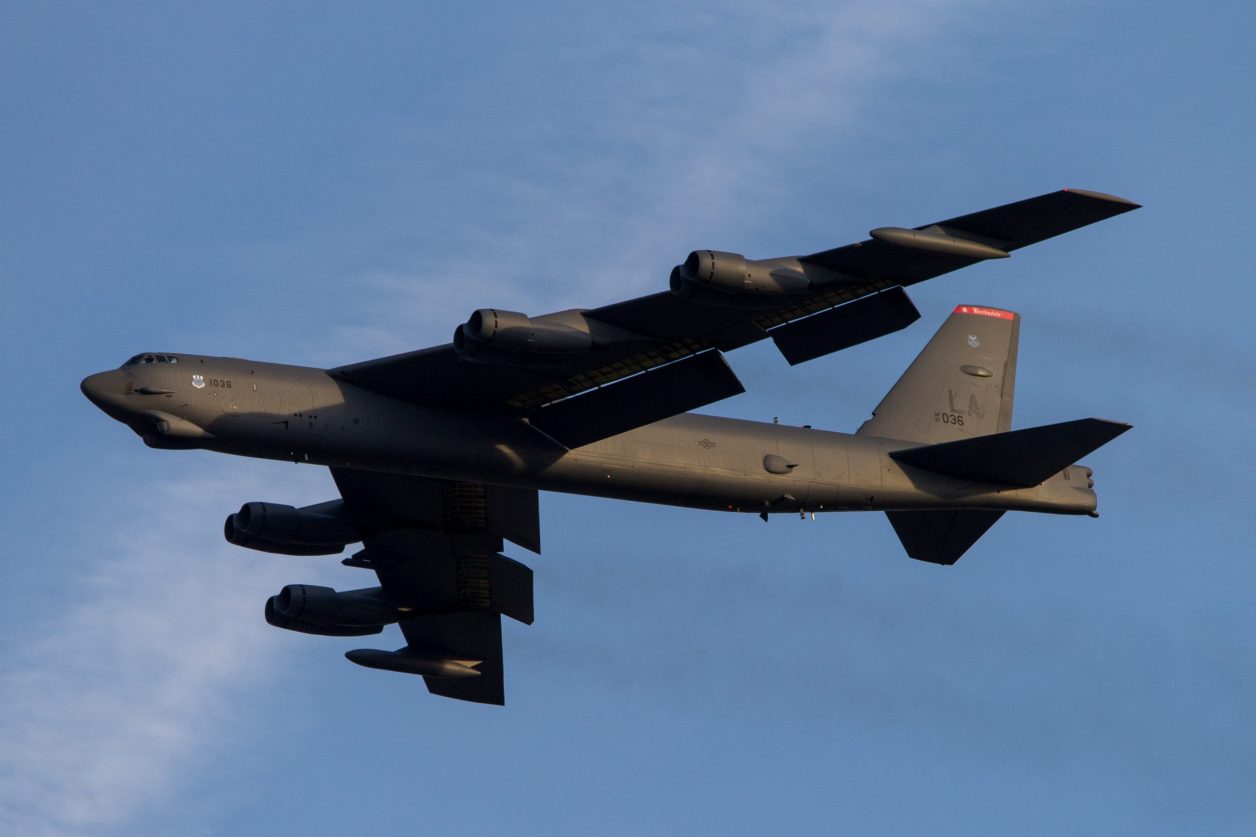Soviet-designed guided surface-to-air missile system S-75 Dvina (NATO Name: SA-2) has been responsible for downing the greatest number of American aircraft than any other missile in military history.
Deployed in 1957, the missile continues to be used by other countries even in the 21st century. It has to its credit some major kills like B-52 and U-2 ‘Dragon Lady.’
The Soviet Union developed the high-altitude air defense system with command guidance. Its first kill was the shooting of a Taiwanese Martin RB-57 D Canberra over China in October 1959.
The aircraft was hit by a salvo of three V-750 (1D) missiles at an altitude of 20 kilometers. But at that time, the Chinese gave credit to their fighter jets to keep the state-of-the-art system under wraps.
A typical SA-2 battery relied on a truck-mounted Spoon Rest acquisition radar unit, which provided target location data to a rudimentary computer, and Fan Song guidance radar, which aided in missile guidance and target acquisition.
To operate each SA-2, a minimum of five primary crewmen, in addition to maintenance and other support personnel, were required: three radar operators, one controller, and a battery commander.
The system shot to fame when it brought down the U-2 aircraft flying over the Soviet Union on May 1, 1960, leading to the capture of the American pilot Francis Gary Powers.
Gary Powers, a veteran of the Korean War and a 30-year-old CIA pilot, was to fly a spy mission over the Soviet Union. He took off from an American airbase in Pakistan and was en route to Central Asia by flying at a height of 70,000 feet. He was to land at another base in Norway.
At that altitude, it was considered invincible to the range of the enemy’s fighter jets and missiles. But as he passed over the Russian city of Sverdlovsk, the unimaginable came to pass – Power’s aircraft was hit by a barrage of S-75 missiles. Power was captured and tried for espionage.
Seven years later, the system will knock off the carrier-based A-4 Skyhawk piloted by John McCain, the US politician who ran for President in 2008. McCain had to eject after S-75 hit his aircraft. Badly injured, he parachuted into Hanoi’s Trúc Bach Lake, where he was fished from the water and taken prisoner.
During the massive bombardment of Vietnam in 1972, in what later came to be known as the Christmas bombing, the US lost 15 B-52s, the pride of America’s fleet. Six of these Stratofortresses were shot down in one day alone, and 33 airmen were lost. A reminiscent of the S-75s prowess is the B-52 Victory Museum in Hanoi.
The system, deployed in Cuba, claimed another U-2 flying during the Cuban Missile Crisis in 1962, bringing the world to the precipice of another World War.
During the Cuban Missile Crisis, U-2 was tasked with photographing the build-up of Soviet nuclear missile sites in Cuba. The intelligence gathered by U-2 underscored the importance of aerial reconnaissance.
In his book Hunt for the U-2, Krzysztof Dabrowski explained that the primary danger was posed by the Soviet S-75 SAM sites. A U-2 detected the presence of S-75 on August 29. However, what the Americans did not find out was that the 11th Missile Air Defense Division had constructed and deployed 24 SAM sites.
On October 27, 1962, another U-2 was tasked with making an overflight from McCoy AFB equipped with reconnaissance cameras and SIGINT gathering systems. As the aircraft took off from the American base, no one knew that the S-75 SAM sites in Cuba were activated.
As soon as U-2 entered Cuban airspace, Soviet radars detected and marked it as ‘Target 33’. The operators tracked the aircraft while feeding reports to S-75 SAM sites.
As the U-2 flew over Guantanamo Bay, the aircraft came overhead the Soviet nuclear missiles deployed outside the village of Filipinas. The missiles were meant to destroy the American base in Guantanamo should push come to shove.
The nuclear missiles had moved in just a day prior, and the US had no inkling about it. When the U-2 flew over it, the Soviet commanders ordered the shooting of the Spy Aircraft.
The U-2 aircraft was hit at an altitude of 22,000 meters. Two of the three missiles fired at it detonated underneath it, and the third one exploded above it. This sprayed the aircraft and the pilot with shrapnel. The wreckage of the aircraft was found with the pilot still strapped to the seat. This incident brought the two nuclear powers to the brink of war.
China Uses Russian Missiles To Hunt US Planes
The Soviet missile system did not even spare the American Super Spy plane, which the US lent to Taiwan to glean intelligence about China’s strengths and weaknesses, the location of its military installations, submarine bases, and the type of aircraft it was developing.
U-2, nicknamed the Dragon Lady, was designed in the 1950s. It could reach a staggering altitude of 70,000 feet, much beyond the range of the adversary’s anti-aircraft missiles, to take high-resolution photographs. Its stratospheric reach created the fable of its invincibility.
However, S-75 Dvina pierced this invincibility and brought down at least four U-2 aircraft.
On September 9, 1962, the Chinese Army’s S-75 anti-aircraft missile claimed its first U-2 aircraft, which was flying a mission over Nanchang, China.

On November 1, 1963, another U-2 aircraft on a reconnaissance mission over a suspected nuclear facility in Wuhan was shot down by PLA-Air Force S-75 missiles. The pilot was captured.
On July 7, 1964, another aircraft was hit by PLAAF S-75 surface-to-air missiles over Fujian province when it took off from US Naval Air Station Cubi Point in the Philippines to examine China’s supply route from Hainan Island to the borderlines between Mainland China and North Vietnam. The pilot died following a failed ejection.
On January 10, 1965, another U-2C aircraft took off from the Taoyuan air base to conduct a photo reconnaissance mission to ascertain the production status of the PLA’s Atomic Bomb. He, too, was shot down by the S-75 Surface-to-air missiles. The pilot was captured.
Downing The Stratofortresses
To end the protracted Vietnam War, the US planned the biggest-ever bombing campaign in history. A shock-and-awe campaign called Operation Linebacker II was undertaken to shake the Vietnamese “to their core,” as summarised by then-US national security adviser Henry Kissinger.

The campaign saw more than 200 American B-52 bombers fly 730 sorties and drop over 20,000 tons of bombs on North Vietnam over 12 days in December 1972.
But the Vietnamese proved to be a determined adversary. At the push of a button, the Vietnamese missile men blew up over a dozen B-52 bombers out of the sky. Amongst the anti-aircraft arsenal that Vietnam possessed, the S-75 Dvina proved to be the deadliest.
The two-stage, 35-foot-long SA-2 was likened to a telephone pole by the US forces. The 5,000-pound missile boasts an effective range of about 21 miles, heading toward its target at more than four times the speed of sound. It could deliver a 430-pound warhead that could shred anything within its nearly 300-yard maximum blast radius.
Recalling the night 50 years later, a retired US airman would say: “It almost felt like you could walk across the tips of those missiles in the sky. There were so many fired at you.” The flak was so bright, he said, that you could “read a newspaper in the cockpit.”
At that time, Boeing’s B-52 bomber was the gold standard of air power. The eight-engine Stratofortress, some of which could carry more than 80,000 pounds of ordnance, was designed to be an intercontinental bomber that could deliver nuclear payloads anywhere in the world.
The B-52s could fly higher than the naked eye could see, making their attacks both physically and psychologically devastating. Their massive payloads would arrive seemingly from nowhere.
The first day of the bombing annihilated the myth about the invincibility of the B-52. “We all feared the B-52 at first because the US said it was invincible,” Nguyen Van Phiet, a North Vietnamese missile gunner credited with downing four B-52s during Linebacker, told Smithsonian magazine in 2014. “But after the first night, we knew the B-52 could be destroyed just like any other aircraft.”
The Vietnamese realized that the bombers swooped in long columns over a predetermined track. After dropping their payloads, they banked turns towards the home base. At this point, their electronic jamming equipment, meant to thwart anti-aircraft batteries, would be facing upwards towards the sky, leaving them vulnerable to the S-75.
These skills have given the S-75 Dvina air defense system a reputation for durability and reliability. No doubt, Egypt deployed the S-75 air defense system to the border with the Gaza Strip in 2024 as Israel was making final preparations to launch a military operation to strike Rafah.




